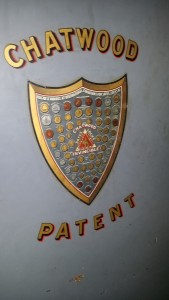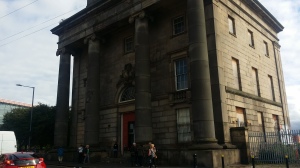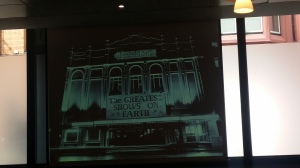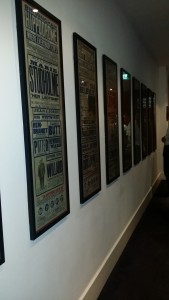The following post was written by Emma Roberts after attending an event with the Birmingham History Network. The report is republished here with the author's permission. The original can be found at: https://arandomenglishlife.wordpress.com/2015/09/22/birminghams-archaeology-birmingham-heritage-week/
Birmingham's Archaeology
I know very little about the early part of Birmingham’s history. I
probably know more about Leicestershire’s local history than I do about
my home city – which is a shame, but as part of Birmingham Heritage
Week, the Birmingham and Warwickshire Archaeological Society
hosted a lecture about their excavations and what they have discovered
and then followed this by a walk, which pinpointed the sites then talked
about.
Before we get into the archaeology I have to talk about Birmingham
and Midland Institute, where the talk took place…their lecture theatre
has to be the best one I have ever been too. Look at the fabulous
historic lecture theatre – I love the colour of the seats which I can
only describe as puke green! The seats were so comfortable too, unlike
most university ones.
The talk was given by Dr. Mike Hodder and Dr. Stephanie Ratkai. Dr.
Mike Hodder was Birmingham Council’s planning Archeologist for twenty
years and together with Dr. Stephanie Ratkai has worked on excavations
of numerous sights in Birmingham, including the Bullring, Library of
Birmingham and Queen Elizabeth Hospital.
The talk itself centred on the archaeological work in Digbeth, which
was a historic industrial site, that was prone to flooding. The fact
that it was such a damp site has undermined the legend that Beorma and
his followers settled here and that is why the city is called
Birmingham. If Beorma did exist, he probably didn’t settle in Digbeth.
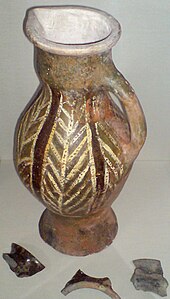

Modern Digbeth today is actually compromised of two separate
parishes, with Deritend being in the parish of Aston, which was
separated by the River Rae. I have walked past the River Rae many times
and always thought it was a later canal…but it turns out it was a river!
Deritend was home to a pottery industry, which importantly gave it’s
name to Deritend ware, which was manufactured in Deritend and in the
Bullring area. The pots themselves were made by a orange local Merican
mudstone and detailed with a V pattern with a white clay which came from
further afield. The busy trade of other industries drew people to the
Bull ring to trade, and probably either bought cookware while they were
here or bought products within Deritend ware – which made for the
successful distribution of Deritend ware throughout the Midlands, and it
is found regularly in digs sites. During digs as well pieces of flint
were found which indicate that the site was in use in the Stone Age as
well. It is also home to the Old Crown Pub with a very impressive sign
which claims the pub dates back to 1368, however excavations by Dr.
Hodder in the beer garden have suggested that there is no evidence to
support the claim that the pub is that old.


Residents in Digbeth who were actually in the parish of Aston
campaigned that the needed their own church because flooding often
prevented them from travelling across the river to get to their Parish
church in Deritend. It is dubious whether this was true of whether
villagers wanted a closer church instead of walking several miles to get
to their one in Aston. Whatever the case may be the church was the site
of the burning of John Rogers during the reign of Queen Mary I. He is
recorded as a Martyr to the protestant faith and was involved in helping
to translate the bible into English.
Just up from the Old Crown on the same side, excavations also found
evidence of a man-made pool built within the medieval period, the reason
behind the creation of the pool was unclear but the area was home to a
significantly sized tanning industry which was probably connected in
some way to the
pool.
Finally, the bit of archaeology I did know about was located on the
site of the Bullring, which was the site of the old manor house with had
a moat (this is reflected in street signage with Moat Lane). During
excavations they found that the medieval manor’s walls were remarkably
well preserved. Just up was the corner of Moat Lane is a very tired
looking building, which use to be a music hall and was frequented by the
Peaky Blinders, this building is scheduled for demolition and area to
be rejuvenated.

